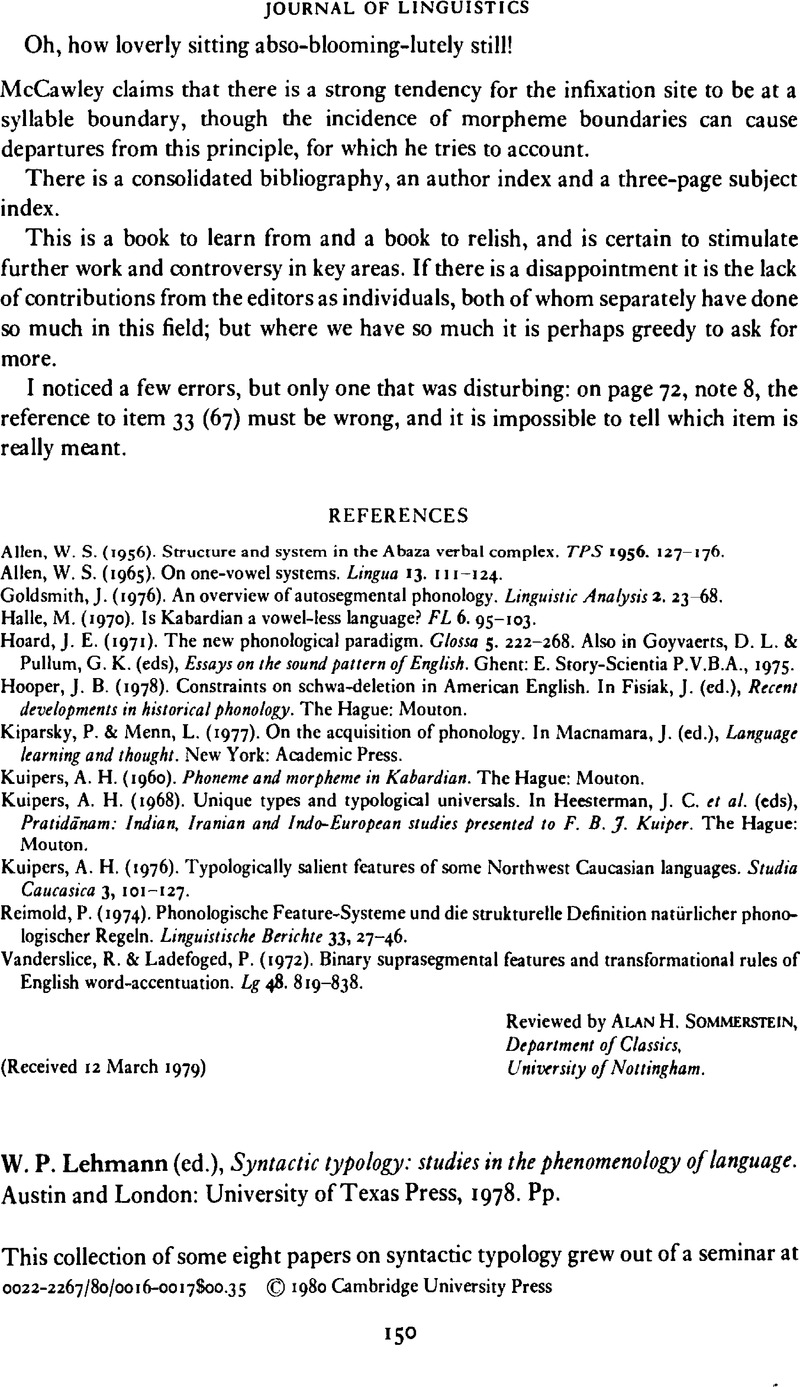Crossref Citations
This article has been cited by the following publications. This list is generated based on data provided by Crossref.
Palmer, F. R.
Allan, Keith
Langacker, Ronald W.
Johnson, Steve
Bavin, Edith L.
Smith, N. V.
Fox, Barbara A.
Corbett, Greville
Nash, David
and
Laycock, Don
1982.
Reviews.
Australian Journal of Linguistics,
Vol. 2,
Issue. 2,
p.
227.
Allerton, D.J.
1984.
Three (or four) levels of word cooccurence restriction.
Lingua,
Vol. 63,
Issue. 1,
p.
17.
Camargo, Eliane
2012.
Manifestações da ergatividade em caxinauá (pano).
LIAMES: Línguas Indígenas Americanas,
Vol. 5,
Issue. 1,
p.
55.





